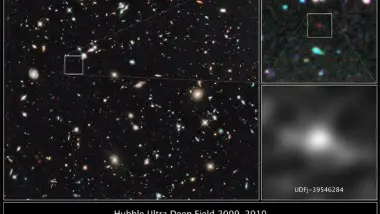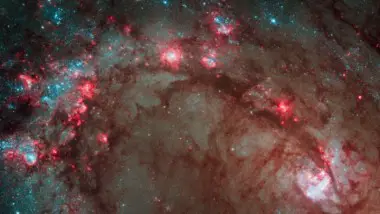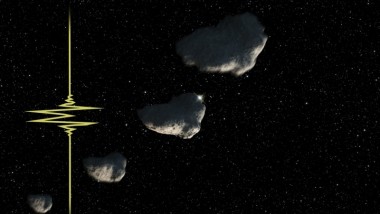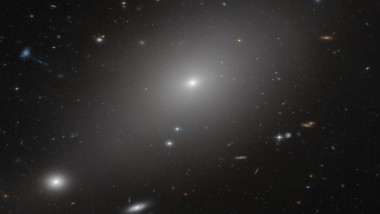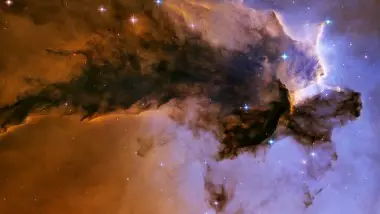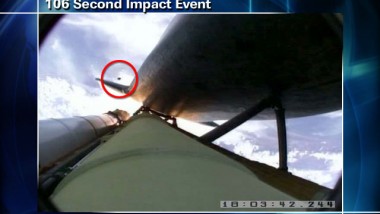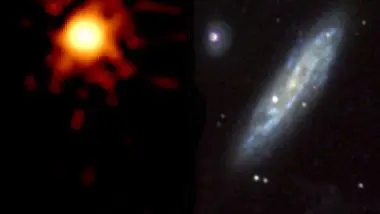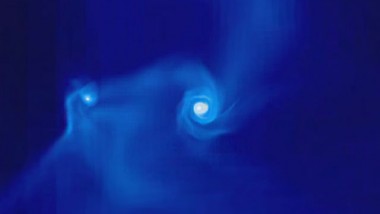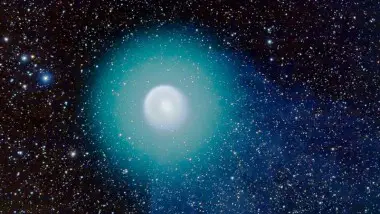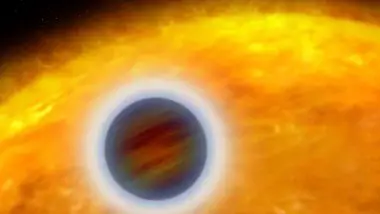The farthest and oldest galaxy ever seen is a red blob in this infrared image taken by the Wide Field Camera 3 on the Hubble Space Telescope. Source: NASA, ESA, G. Illingworth (University of California, Santa Cruz), R. Bouwens (University ...
Star Birth in M83, the Southern Pinwheel
NASA has recently reported the birth of a new star, captured by the new camera installed on the Hubble Space Telescope. The image is the most detailed view of star birth ever made. This rare phenomenon occurred in the graceful, ...
Hubble Finds Smallest Kuiper Belt Object Ever Seen
NASA announced that its Hubble Space Telescope has discovered the smallest object ever seen in visible light in the Kuiper Belt. It is a vast ring of icy debris, encircling the outer rim of the solar system just beyond Neptune, ...
Bully Galaxy Rules the Neighborhood
NASA astronomers are using an image of a galaxy named ESO 306-17 to learn more about the formation of star groups, galaxies and celestial events. Since this galaxy is relatively separated from other observable objects, researchers are able to see ...
Stellar Spire in the Eagle Nebula
Appearing like a winged fairy-tale creature poised on a pedestal, this object is actually a billowing tower of cold gas and dust rising from a stellar nursery called the Eagle Nebula. The soaring tower is 9.5 light-years or about 90 ...
STS-125 Final Shuttle Mission to Hubble Takes Off
The space shuttle Atlantis has begun the final servicing mission to the Hubble Space Telescope. Launched at 2:01 EDT on May 11 from Kennedy Space Center’s launch pad 39A, the mission is scheduled to last 11 days concluding in a ...
Swift Catches Exploding Star
NASA’s scientists recently used the Swift Satellite in order to see a star explode and become a supernova. Although over the past 100 years astronomers have observed thousands of supernovas, every time it was seen, it was only after the ...
Smaller Stars Help Bigger Stars Form
According to a new theory proposed by astrophysicists from Princeton University and the University of California, Berkeley, massive stars form inside an interstellar cloud of gas and dust, with the “help” of smaller stars. The smaller stars, which are about ...
Largest Known Comet Outburst Detected
A little comet named Holmes brightened unexpectedly in mid-October 2007, as it rushed through our solar system, to the extent that it became extremely bright and was visible to the naked eye. Scientists are not certain what made the little ...
Hubble Extrasolar Discovery
In 2003 NASA’s Hubble Space Telescope captured an image of the atmosphere of a planet orbiting another star. The findings have been published on Feb. 1 2007 in a letter to the journal Nature by researchers from the University of ...

